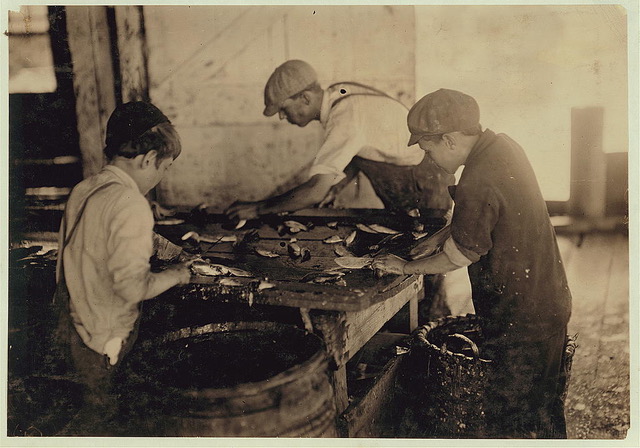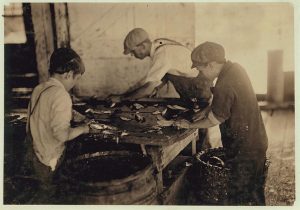Willoughby: Far from the sea, but sardines were favorites in Aspen

Library of Congress/Courtesy photo
I remember my father opening cans of sardines and enjoying them for lunch. Far from the ocean, mining-era miners had a special hankering for oysters. I have long thought that my father’s sardine habit came from when he began spending time at the Midnight Mine boarding house where older miners introduced him to many indulgences, some not great for a minor.
That may be where he was introduced to sardines. At that time, sardines were already a “quick lunch” favorite mainly because, during WWI, canned sardines were a staple for the troops overseas.
The oldest ad for canned sardines in Aspen’s papers was in 1886 at Fulton Market that pushed imported sardines, as well as mackerel and tub oysters. Eight other stores advertised them in the next four years including, E.M. Dawson, Gould Brothers, Pinger Grocery, Thomas Beck, and the Aspen Bakery. Some offered cod, as well. The most common price was three or four cans for $.25 ($7.34 in today’s dollars). One can of sardines was about the same price as a pound of beef.
It was during that period when sardine canneries opened in Eastport, Maine, that competed with the imports. Child labor was common then, as well, and canneries were dangerous places to work. Children, as well as adults, often cut themselves, slicing up the sardines. They worked when the fish were in, often for very long hours each day.
The West Coast production of sardines began in 1902 in Monterey where, quickly, 30 canneries opened. Canneries added new elements in the early 1900s, canning them in oil, another variety with mustard, and later mixing in tomato sauce. A common price in Aspen during that period was $.10 a can — $2.70 in today’s dollars, about the same as a decade before for imported sardines. Aspen’s stores increased the fish options, canned and fresh, during that period, too — but still offering oysters, adding lobsters, salmon, shrimp, crab, and clams.
It wasn’t until the 1920s that the ads for sardines included brand. The first was Del Monte in late 1928, sold at the Mesa Store for $.20 a can comparable to a decade earlier. That was around the time my father began eating sardines at the mine.
Events then slowed things down. The Depression set in, so there was not much advertising for sardines. The oval cans got larger, but the price dropped to $.10 a can, about a dollar less in today’s dollars. Once the war began, like in WWI, canned sardines made good troop lunches. Production went way up in Monterey, but wartime rationing set in for sardines.
The last stage was the disappearance of sardines in the 1950s in Monterey. All the canneries shut down. Around the same time, canned tuna became popular, taking the place of sardines. Nearly thirty years later, the price for a can in Aspen was, in today’s dollars, the same as it had been for decades.
In a town where fresh trout was readily available or frozen for later, canned sardines, at least in my parent’s generation, were primarily a “quick lunch.” My father offered me sardines whenever he opened a can, but the only canned fish that I would eat was tuna.
Tim Willoughby’s family story parallels Aspen’s. He began sharing folklore while teaching at Aspen Country Day School and Colorado Mountain College. Now a tourist in his native town, he views it with historical perspective. Reach him at redmtn2@comcast.net.
Aspen makes improvements to Glory Hole Park
The City of Aspen is undertaking a three-week project to enhance pedestrian safety and accessibility at Glory Hole Park.









